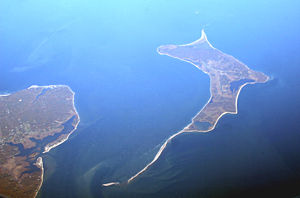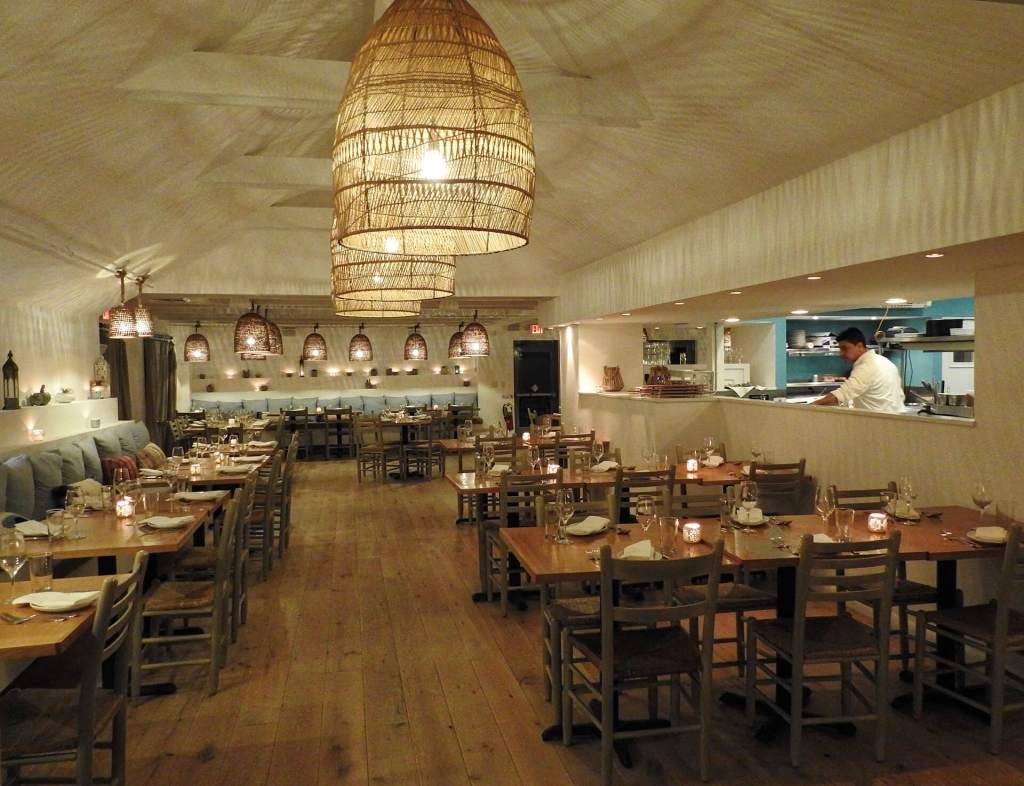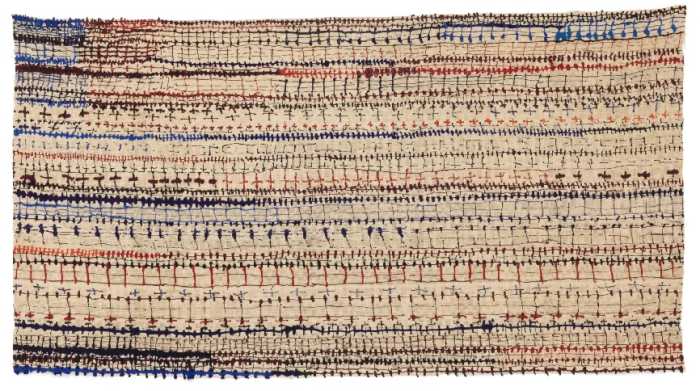20 Years Ago: Visiting The Virgin Island, July 24, 1992

For almost everyone on the East End, Gardiner’s Island is a dream. It floats in the bay between Montauk and Amagansett, six miles long and at places three miles wide. You may look at it but never, never touch. For Gardiner’s Island has been owned by one family, the Gardiner family, since 1639, and unless you are invited there by either Robert David Lion Gardiner or his cousin Alexandra Creel Goulet, you will be turned away if you try to set foot on the place.
And so it was that last Saturday afternoon, as a guest of Mr. Gardiner, I took my launch to Gardiner’s Island—it is just 15 minutes across the bay—and I motored through the narrow channel there, the only sheltered harbor on the island, past the signs reading PRIVATE ISLAND and past all the seagulls, each one sitting atop a piling, to pull in at the small dock there.
Later in the day, I would be having lunch with Gardiner and a small group of journalists, and we would be sitting in our shorts and tennis shirts listening to Gardiner talk about how the King of England had granted his forefathers the right to hang a man and on one occasion, when there was a murder on the Island they actually did. In spite of the heat, Gardiner, 81 years old, would be wearing white slacks, a blue blazer with a nautical insignia on the breast pocket and a Palm Beach tie.
But for now, as we tied up at the dock we were greeted by a man in a cowboy hat who told us that we were early, that Mr. Gardiner and the others had not yet arrived, they might be an hour or more, and we should make ourselves comfortable there by the dock.
We talked for a while with this man, who occasionally peered through binoculars out to sea in search of Gardiner’s boat. He told us he was the caretaker of the Island and he lived there with his wife. There was another man who captained the yacht at the island and who went back and forth for supplies and there was a seven-foot snake who lived under the dock and we should look for him but he was not dangerous. The caretaker then adjusted the knife on his hip, walked to the Land Rover, and, telling us he would be back in awhile, drove off. I noticed there were no license plates on this Land Rover, or on either of the two pickup trucks that were parked by the dock, ready to transport us up to the Manor House one and a half miles inland.
As I was with two women, there was much talk about the seven-foot snake. Moments later, the snake appeared. The women quickly retreated to the pickup truck. They climbed inside and stayed there. I decided, on the other hand, to take a walk. It was rare to be on this primeval island, alone, yet welcomed, with time to pass. I walked down a path, through a grove of trees, and found myself on top of a dune, the beach and the sea in one direction and some grassland, foliage and deep woods off in the other. As far as I could see there was nothing but the sun and the wind and the rustling of the trees and beach grass. This is how it had been 350 years ago when the first Englishman, Lion Gardiner, came to the English colony that became the State of New York. It was in the wild.
I must say it took my breath away. The rocks and trees and grasses all seemed to blend in with one another. There were no stands of trees that had grown from seeds brought back from the Orient. No wildflowers-in-a-can that had come from Indiana. This was the original eastern Long Island. This was the way it was. Furthermore, there was this incredible din. It reminded me of the traffic noise you hear from an apartment house in Manhattan. What it was was the creatures of this place. Things were croaking and cackling in the tall grass. Other things were buzzing in the air. There were birds cheeping and cawing. And there were sounds I took to be coming from animals, big and small, that were somewhere off beyond my vision. A rooster crowed.
This ruckus was so great that I had the distinct impression I was the cause. I had had the audacity to leave the dock and to walk this quarter of a mile into a land inhabited by the creations of nature. I was an intruder, an interloper. And they were raising a ruckus.
The sense of this was heightened by the appearance of the biggest bumblebee I have ever seen. He was the size of my thumb and he approached me without fear, buzzing around my waist, then my head, then my knees. I stood completely still at first, not quite sure what to do, and my first instinct, of course, was to brush him off or, because he could surely sting me very badly, to swat him down. But I fought this instinct. Instead, I stood still and allowed him to sniff me out and award me the bumblebee seal of approval. Which he did.
I stayed on that dune for a good 20 minutes. No boats were coming so there was no need for me to get back. In many ways, that time on the dune was more of a visit to Gardiner’s Island than any hospitality offered by any human being, Gardiner or otherwise. I met a dragonfly. The bumblebee had flown off but now he was back, checking me out a second time. I thought, this dumb bumblebee didn’t get it the first time. Then I thought, maybe this is another bumblebee. I saw grasshoppers and I saw an osprey, its wingspan almost six feet, swooping low over the waves.
Eventually I walked back to the dock. Gardiner’s boat was on its way now and the caretaker was back, the door to his Land Rover hanging open, a can of soda on the floor. The two women were still in the pickup truck.
“Check yourself all over for ticks,’’ he told me.
“We’ve got a bumper crop this year.’’









